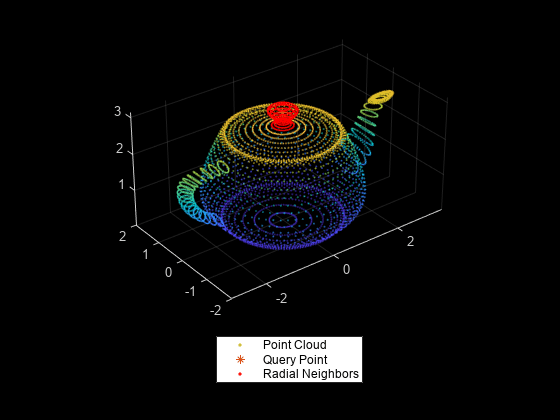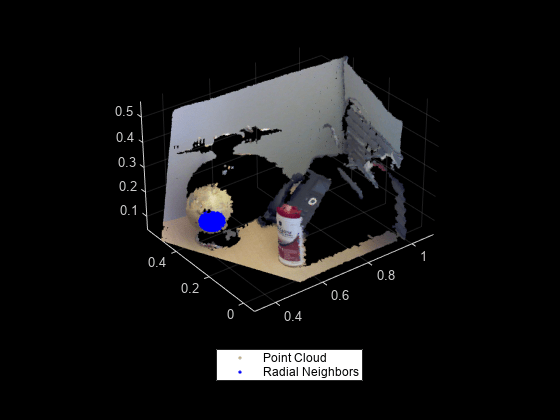findNeighborsInRadius
Find neighbors within radius for query points in point cloud
Syntax
Description
[
returns the indices,dists,numNeighbors] = findNeighborsInRadius(ptCloud,points,radius)indices of neighbors within a radius of one or more query
points in the input point cloud. ptCloud can be an unorganized or
organized point cloud. The neighbors within a radius of the query points are computed by
using the Kd-tree based search algorithm.
[
returns the neighbors within a radius of one or more query points in the input point cloud.
The input point cloud is an organized point cloud generated by a depth camera. The neighbors
within a radius of the query points are determined using fast approximate neighbor search
algorithm. indices,dists,numNeighbors] = findNeighborsInRadius(ptCloud,points,radius,camMatrix)
The function uses the camera projection matrix camMatrix to know
the relationship between adjacent points and hence, speeds up the search. However, the
results have lower accuracy as compared to the Kd-tree based approach.
Note
This syntax only supports organized point cloud data produced by RGB-D sensors.
You can use
estimateCameraMatrixto estimate camera projection matrix for the given point cloud data.
[
specifies options using one or more name-value pair arguments in addition to the input
arguments in the preceding syntaxes.indices,dists,numNeighbors] = findNeighborsInRadius(___,Name,Value)
Examples
Input Arguments
Name-Value Arguments
Output Arguments
References
[1] Muja, M. and David G. Lowe. "Fast Approximate Nearest Neighbors with Automatic Algorithm Configuration". In VISAPP International Conference on Computer Vision Theory and Applications. 2009. pp. 331–340.
Extended Capabilities
Version History
Introduced in R2015aSee Also
pointCloud | findNearestNeighbors | estimateCameraMatrix | cameraMatrix

